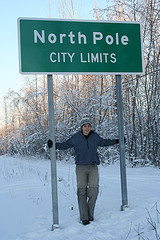 I spent this past weekend in Chicago and, as you may know, it was FREEZING in Chicago this past weekend. But since a mere 6 months ago I was living in Alaska I know that extreme cold doesn’t mean I can’t take my camera out and I now have some lovely photos of very cold Chicago dwellers. For those of you that have never yet ventured out with your camera at 25 below but think you might be brave enough this winter here are a few tips:
I spent this past weekend in Chicago and, as you may know, it was FREEZING in Chicago this past weekend. But since a mere 6 months ago I was living in Alaska I know that extreme cold doesn’t mean I can’t take my camera out and I now have some lovely photos of very cold Chicago dwellers. For those of you that have never yet ventured out with your camera at 25 below but think you might be brave enough this winter here are a few tips:
Use A UV Filter
They are a hell of a lot cheaper to replace than a lens. Extreme cold makes glass more brittle, last winter I was out shooting at -30F, put my camera down, gently, and the UV filter simply shattered. But it cost ten bucks to replace so I didn’t have to be too worried!
Get A Good Camera Bag and Heat It!
A decent camera bag is a worthwhile investment anyway but especially if you do a lot of outdoor photography. In the cold it’ll offer some protection by itself and you can make it even better by padding around the camera with hand or foot warmers (they cost about $2 at sports stores). Wrap them in a thin cloth first to protect the camera in case they leak little carbon particles.
Use A Giant Zip Lock!
It’s actually the change from cold to warm that’s likely to damage your camera. Condensation occurs when cold air meets hot air and condensation is not good for your camera. So put your camera in a giant zip-lock bag, seal the top, and leave it to heat up slowly. It sounds crazy but it really works!
If The Worst Does Happen…
and your camera gets condensation inside open the battery and memory compartments, empty out the battery and memory card, and leave the compartments open until they dry. Do not take a camera with condensation inside back out into the cold, the condensation might freeze and that causes all sorts of havoc!
If you have any more extreme cold tips leave a comment. If not grab your camera and go have fun photographing the snow!









…padding around the camera with hand or foot warmers (they cost about $2 at sports stores). Wrap them in a thin cloth first to protect the camera in case they leak little carbon particles. Use A Giant Zip Lock!
For around $5 you can get reusable hand/foot warmers. They start out a gel (so still use a zip lock) and as they release heat, they get solidify. Drop them in boiling water for a couple minutes and they return to a liquid state, ready for the next trip.
I’m not sure I understand your UV filter comment in this context. I would assume that the lens element was just as cold as the filter, but it did not shatter as it is probably thicker and less brittle than the filter. So how did having the filter on help in this case? It sounds more like you should *not* use a filter in extreme cold because they are prone to breaking under these conditions!
I have had a lot of problems with battery performance declining in very cold weather so I try to make sure that my rechargeable batteries are all freshly charged up. If I carry spares with me, I try to keep them close to my body (breast pocket, etc) to keep them as warm as possible. Another strategy that helps is keeping the camera as warm as possible inside my winter clothing when I’m not using it. I like the idea of the reusable hand/foot warmers though.
Nice tips, some of my tips which may also help. In cold weather, carry the space battery in your shirt pocket as it will keep the battery warm. In cold the battery get down soon so have that cigarette lighter charger for your camera battery type always with you. You can charge your battery in any car.